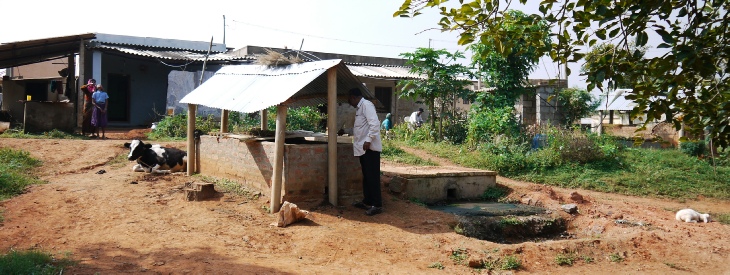If you support our aims and wish to give a donation, you can use the button below.
UK Tax-payers should be able to enable us to reclaim tax on your gift.
Biogas technology
A biogas plant is a closed container containing a mixture of biomass materials and microbes that work effectively without oxygen to generate biogas, a mixture of methane and carbon dioxide. This gas can be used in a gas burner for cooking or as a fuel gas for other purposes.
One source of both biomass and microbes is animal dung. Other biomass materials, such as food wastes can also be added.
The material left after the gas is produced is an effective fertiliser.
Further details of how biogas works, with examples, can be found on the Kingdom Bioenergy Ltd website and also on Biogas Wikispace run by Paul Harris of The University of Adelaide.
SKG Sangha builds small biogas plants for domestic use by rural families, with cattle dung as the main feed material. The gas is mainly used for cooking in gas stoves that are designed to use biogas. The biogas plants are underground tanks made of masonry. The type of plants used until 2016 used the Deenbandhu design, made from rings of bricks. This design requires skilled brick layers.
A set of manuals has been written for a biogas extension programme in Egypt funded by UNDP that uses the Deenbandhu design. A set of slides shows how this design is made.
More recently, extension programmes in India have used the Suntala design, underground tanks made from concrete, cast over metal moulds. The moulds are made as sections, that can be removed, once the concrete has set.


